We've had March-like wind, rain, and coolness for the last several days, so let's bake one of the most springtimey sweets I can think of - sweet-tart, bright, creamy Lemon Bars.
A tender shortbread crust, topped with lots of flavorful, not-too-sweet lemon goo. These cheerful lemon bars are the most lemony baked good I can think of.
These lemon bars are incredibly bright and citrusy. They're nicely tart, definitely sweet but not overwhelmingly so.
They seem intimidating, but truly they're not difficult. Don't worry - I'll walk you through it.
[This post contains affiliate links. I may make a commission for purchases made through links on this post. As an Amazon Associate, I earn from qualifying purchases.]
My history with these lemon bars
What makes this recipe so much better than any other I've tried is the very thick layer of sweet-tart lemon. It's almost twice as thick as on other lemon bars, and is much thicker than the crust. Which makes sense to me - lemon filling deserves to be the star.
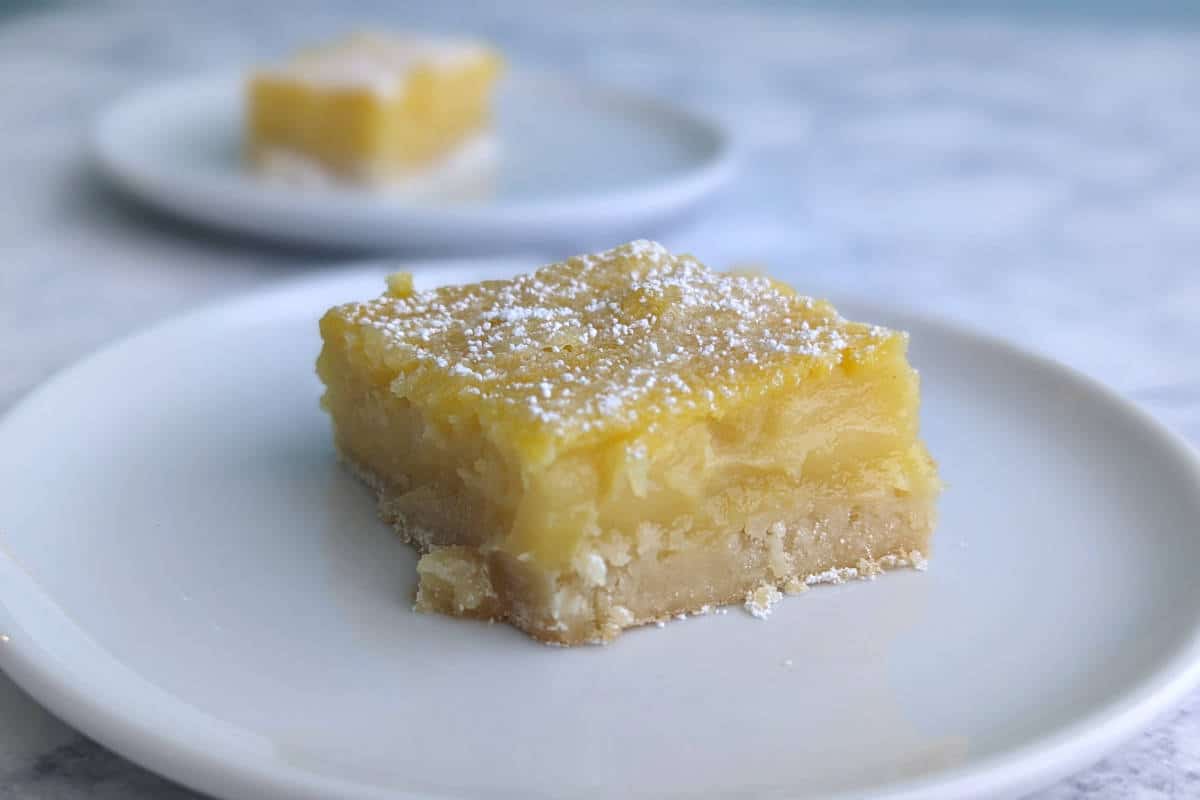
I've made these lemon bars several times. I first made them as part of my 365 recipe challenge. I made them a few years later after we moved, and I won 3rd place at a department picnic for them. (Free cookie cutters and sprinkles as my prize!)
I made them a few times between then and now. I revised the recipe back in 2017, after taking them to an Easter brunch, where attendees couldn't stop eating them. I'm lucky that I got to return home with a few!
I've adapted this recipe from the Lemon Bars recipe from Smitten Kitchen, who got it from Ina Garten's The Barefoot Contessa Cookbook (affiliate link).
Baking instructions and tips
Lemon bars are a shortbread crust, topped with a thick lemon curd that sets as it bakes.
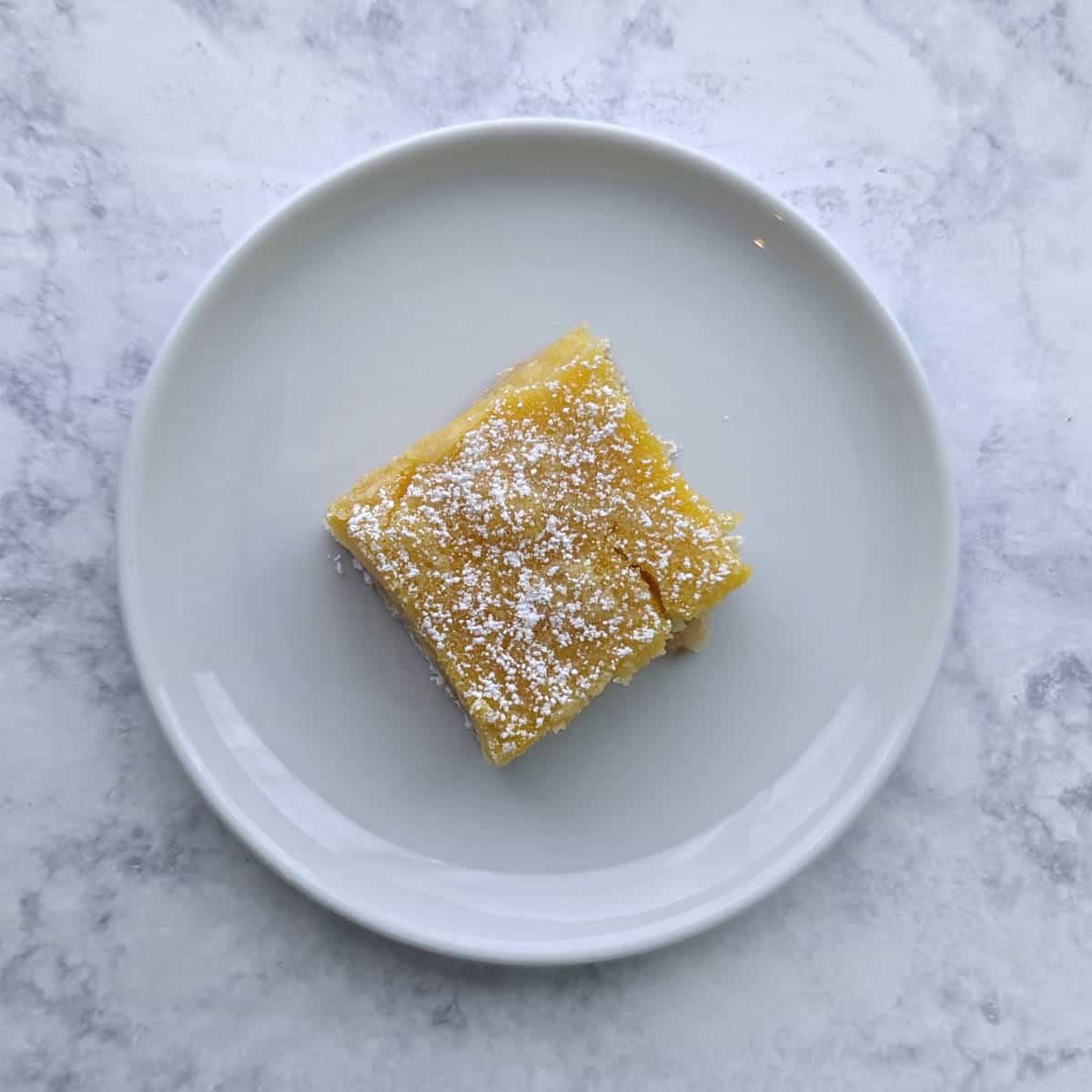
Start by making a simple shortbread crust. A hand or stand mixer makes this incredibly easy. Beat softened butter with sugar, then stir in flour and salt until just combined and crumbly.
Dump this into a well-greased (or parchment-lined) 9x13-inch pan (affiliate link). I recommend shiny aluminum for the pan; nothing glass or dark, as it will cause the crust to overbake. If that's all you have, I recommend you use parchment paper to keep your bars from sticking, and which allows you to pull them from the pan for cutting.
Press the crust into the bottom and up the sides to make a ½ inch edge. Press gently but firmly; not too hard, or the crust will be hard.
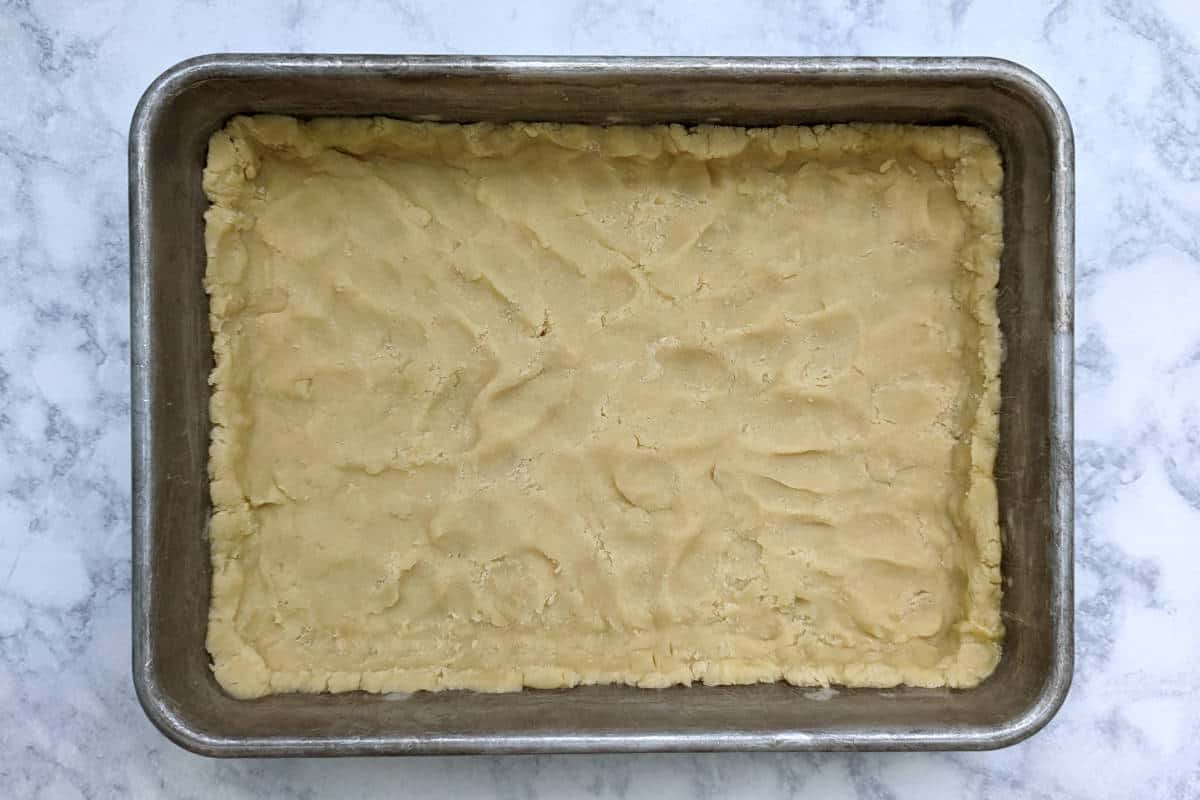
Chill this for 15 minutes before baking it. This firms up the butter and keeps the edges from shrinking back into the bottom. If you scoop your flour instead of weighing it like I do, the crust may keep its shape without chilling it, but why chance it?
You need the edge crust to be high enough that your filling doesn't slosh over it; if it does, that edge filling will overbake and be rubbery. It'll still be tasty, but not the right texture. Overflowing filling will also stick to the pan, especially if you use a glass pan.
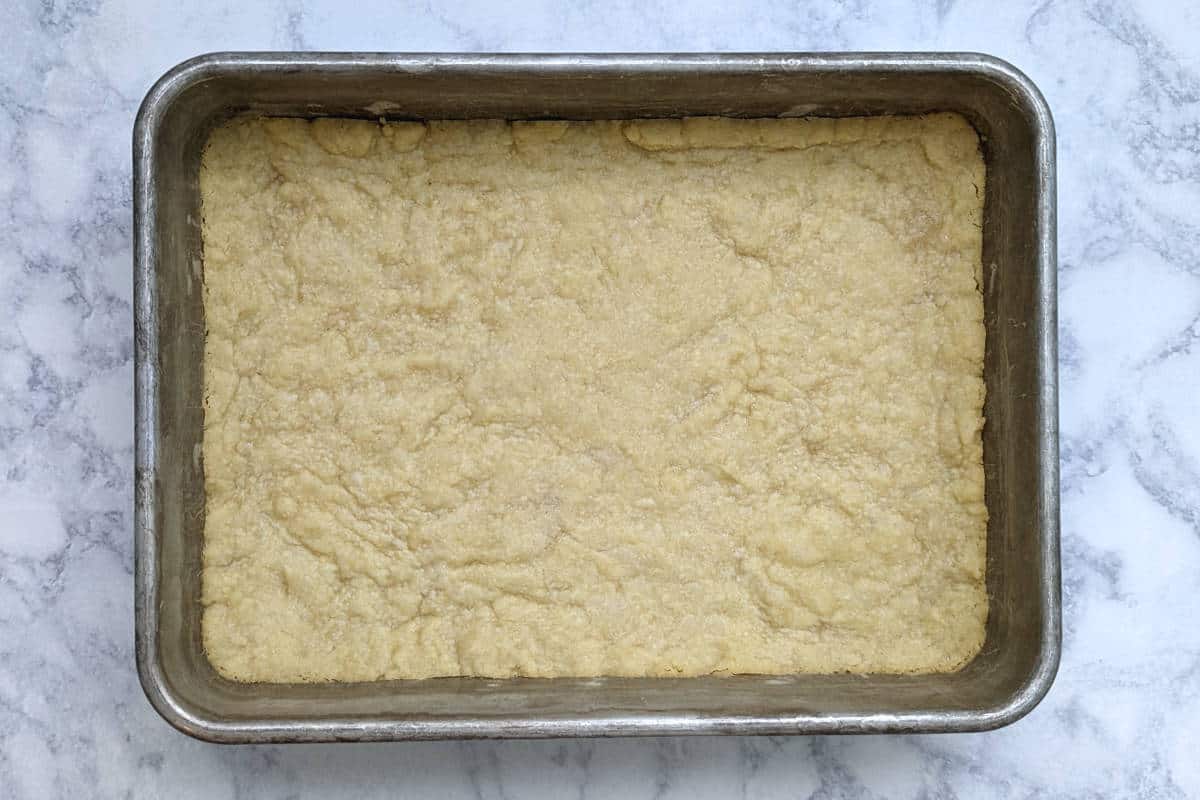
After your crust chills, bake it for 15-20 minutes, until it's barely lightly browned. Set it aside briefly while you finish the filling. It doesn't need to be cool, but you should cool it a few minutes before adding the filling.
While your crust bakes, make your lemon curd filling.
Make lemon curd? Sounds intimidating, but really it's not.
Start by zesting your lemons into your mixing bowl. You need anywhere from 2-6 lemons for this. 2 big lemons give me 2 tablespoons of lemon zest. With smaller lemons, you may need 4-6. Regardless, it is easier to zest your lemons before you juice them.
Next, slice your lemons in half and juice them. This time I used a hand-held citrus juicer (affiliate link), just as I used for my classic margarita. If you already have this kind of juicer, it will work, but it will take a while. (I also squirted my face with lemon juice using the hand-held model.) For expediency, since you need 1 cup of juice, I recommend using an electric citrus juicer (affiliate link).
The electric juicer can be pricey, though. If you don't have either type of juicer, you can peel your lemons, stick them in a blender (or bullet blender (affiliate link)), blend them, and press them through a sieve to keep out the pulp.
Do you have to use real, whole lemons? Yes. Bottled lemon juice has preservatives and an off-taste that won't work here. If you end up a little short on juice, you can add a tablespoon or two of the bottled stuff, but you need 1 cup of fresh juice.
Use a whisk to combine your zest, juice, eggs, sugar, and flour. It won't be completely smooth because of the zest, but definitely mix it well; lumps of flour won't baked out properly.
I use large eggs for everything I bake, and yes, it takes 7. If you use extra-large eggs, like Ina Garten does, you'll need 6. If you have smaller eggs, you'll need even more.
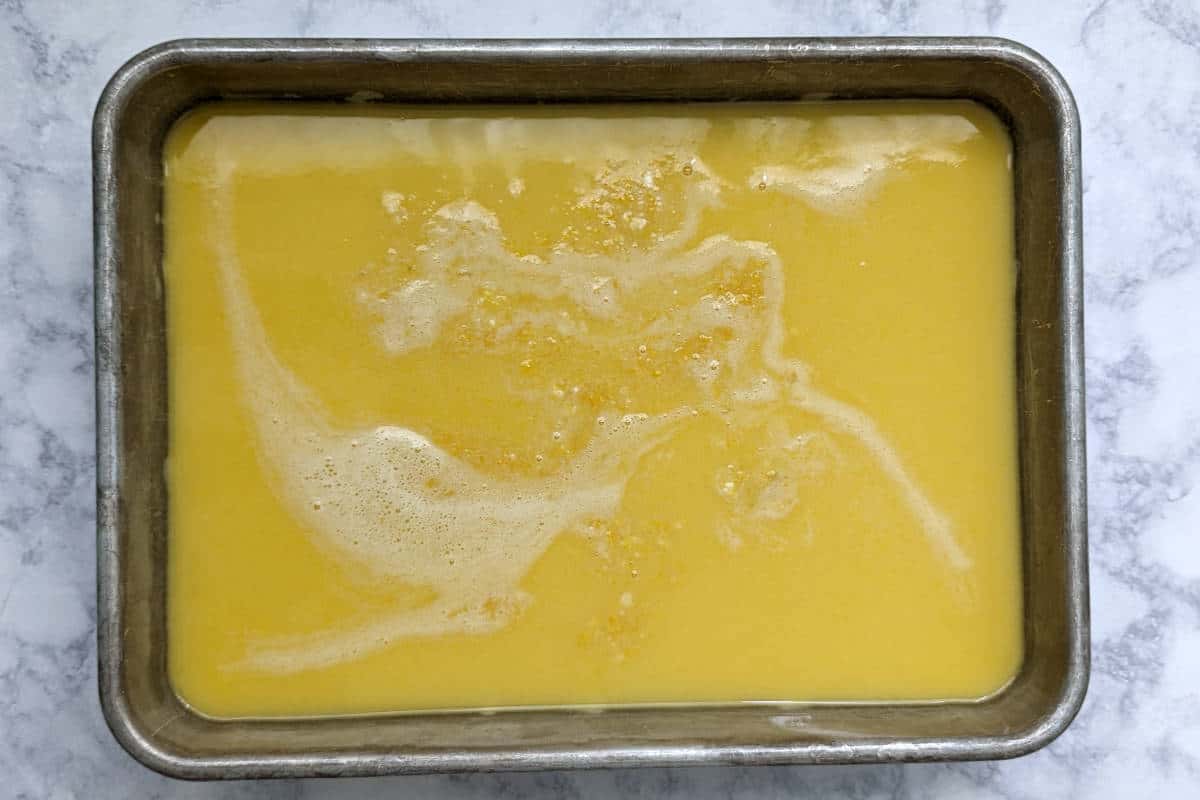
Pour the lemon mixture in the center of the still-warm, par-baked crust.
Bake for 30-35 minutes, until set. The filling will have become less shiny, and will not jiggle when it's done. Do not overbake.
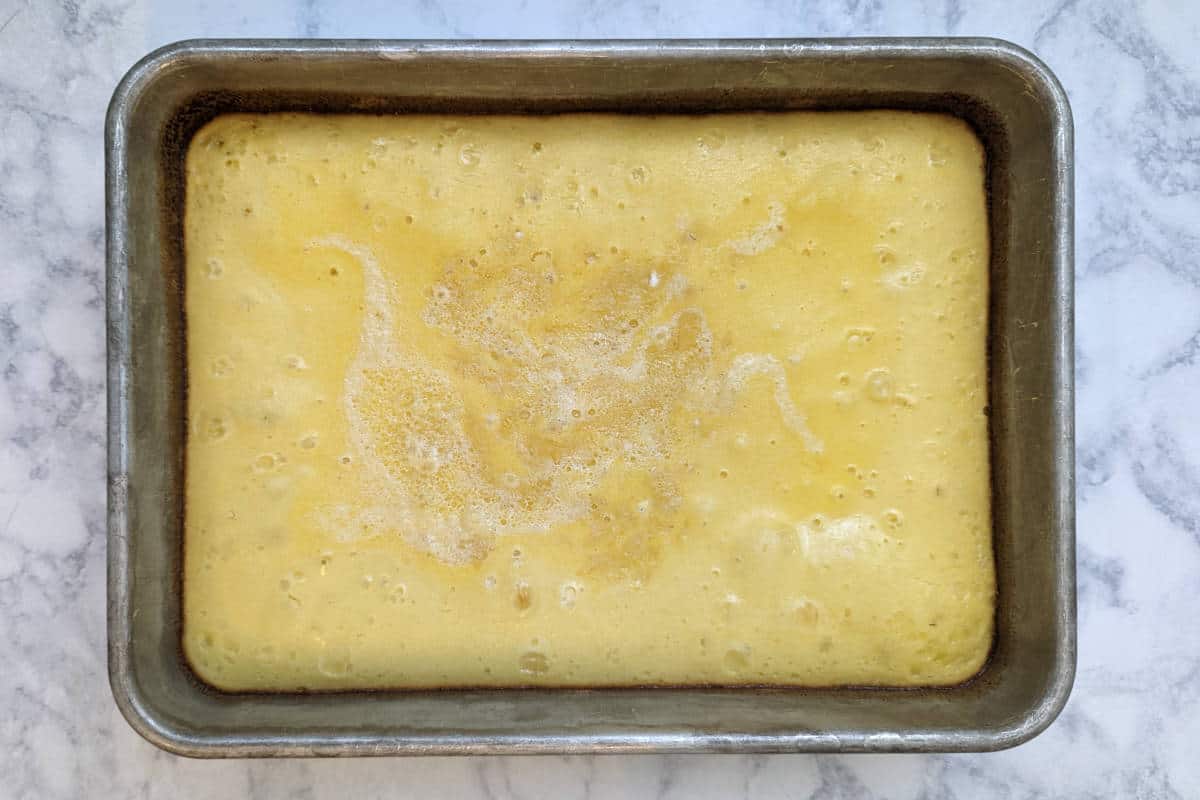
Cool completely, at room temperature, before dusting them with powdered sugar. A bench scraper (affiliate link) cuts these very nicely.
Serving and storage
Store the bars in the refrigerator (due to the high egg content), but pull them out 5-10 minutes before serving as they're at their most delicious at room temperature.
I like lemon bars at potlucks and brunch, or as my afternoon snack on a cold, windy, dreary day. They're equally good with coffee, tea, or wine, if an evening get-together is more your thing.

I love these bars not just because of the brightness and flavor. One 9x13 pan yields a lot of bars, perfect for sharing. For a party, cut them into 64 two-bite bars, a perfect serving size that lets you get seconds or thirds!
Seriously, make these. The last time I made these and shared, I was lucky to come home with any.
Interested in other recipes? I save and share recipes I like or want to try on my Pinterest page - follow me there! You can also check out my Facebook page for more recipes and helpful tips. I'm also happy to try to help troubleshoot my recipes there.
Have you tried this recipe? Or have a question about it? Rate it or leave a comment below! (PS: rating my recipes helps other people find them, too!)
Other Citrus Treats
📖 Recipe

The brightest and most lemony Lemon Bars I know - a shortbread crust topped with a sweet-tart thick layer of goo. Deliciously tart and not toothachingly sweet.
- 16 tablespoons butter (227 grams; 2 sticks), at room temperature
- ½ cup sugar (100 grams)
- 2 cups flour (250 grams)
- 1/16 teaspoon table salt (a dash if you don't want to measure that little)
- 2 tablespoons lemon zest (from 2 large lemons, or 4-6 smaller ones)
- 1 cup freshly squeezed lemon juice (from 4-6 lemons, depending on size)
- 7 large eggs (at room temperature)
- 2 ½ cups sugar (500 grams)
- 1 cup flour (150 grams)
- powdered sugar for topping
-
Line a metal 9x13 inch baking pan with parchment paper, covering the bottom and sides, or grease your pan very well.
-
Cream butter and ½ cup sugar until light and fluffy with a stand mixer or handheld electric mixer. Add 2 cups flour and salt and mix at low speed until just combined.
-
Scrape dough into the prepared pan. Press it along the bottom and up the sides of the pan to form a ½-inch edge. Chill for 15 minutes while you heat the oven to 350F.
-
Bake chilled crust at 350F for 15-20 minutes, until very lightly browned. Set aside to cool for a few minutes, but no need to cool completely.
-
While your crust is baking, prepare the filling. Zest your lemons into your mixing bowl, if you haven't already.
-
Cut your zested lemons in half and juice them, preferably with an electric juicer.
-
Use a wire whisk to mix together the lemon zest, lemon juice, eggs, 2 ½ cups sugar, and 1 cup flour. Pour into the still-warm crust.
-
Bake for 30-35 minutes, until filling is set. It will look not as shiny. Filling will not jiggle when done. Do not overbake.
-
Cool at room temperature. Dust with powdered sugar, and cut into small bars.
-
Store leftovers in the refrigerator, but bring to room temperature for 5-10 minutes before serving.
Use a shiny metal pan for best results. If you have a dark metal pan, use parchment and check for doneness a few minutes early; the edges may overcook. If you have glass, use parchment; these have burned along the edges when I've made them in a glass pan.
Definitely chill the crust before baking it. Not chilling the crust will cause the ½ inch edge to sink in. The filling will burn if it touches the pan. It will also be rubbery if it bakes as a thin layer over the sunken edge crust.
Lemon sizes vary. Have a couple of extra on hand. I needed all 6 lemons the last time I made these.
You need a lot of lemon juice, so use an electric juicer. A handheld model will work too; it just takes longer. If you don't have a juicer, you can peel the lemons (after you zest them) and blend them, pith and all, then strain them through a sieve.
Only use fresh lemon juice, as bottled juice has an off-taste. That said, if you can't get quite enough juice out of your lemons, supplementing with a small amount of bottled juice will be fine.
If you use extra-large eggs like Ina Garten, use 6. If you have smaller eggs, you will need more. Aim for 350 grams of eggs in your filling.
adapted from Smitten Kitchen and Ina Garten's The Barefoot Contessa Cookbook (affiliate link)
Calorie counts are an estimate only.
Recipes from the past:
(Originally published April 2017, with notes from when I made it in 2010. Completely redone in May 2022.)

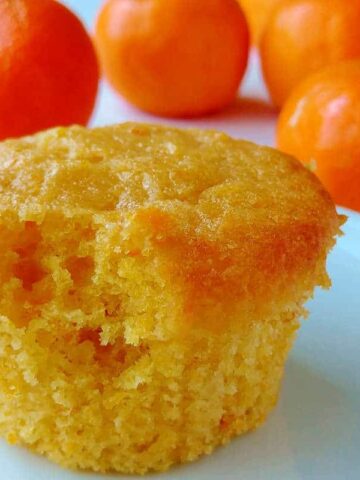
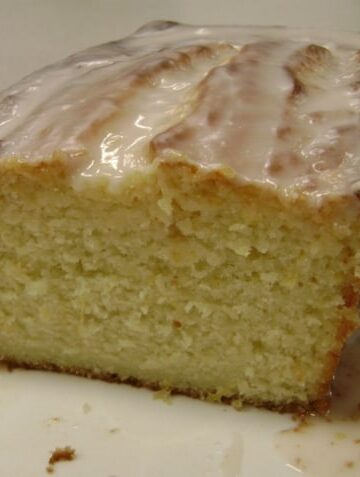




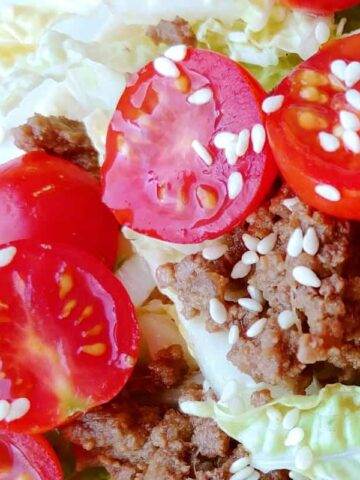
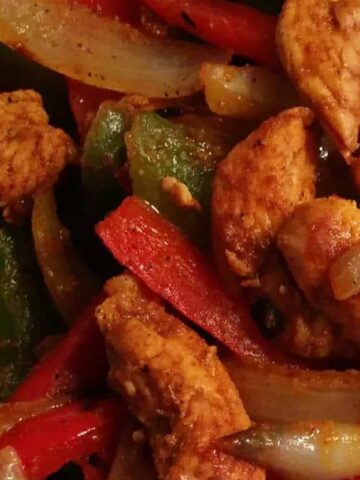

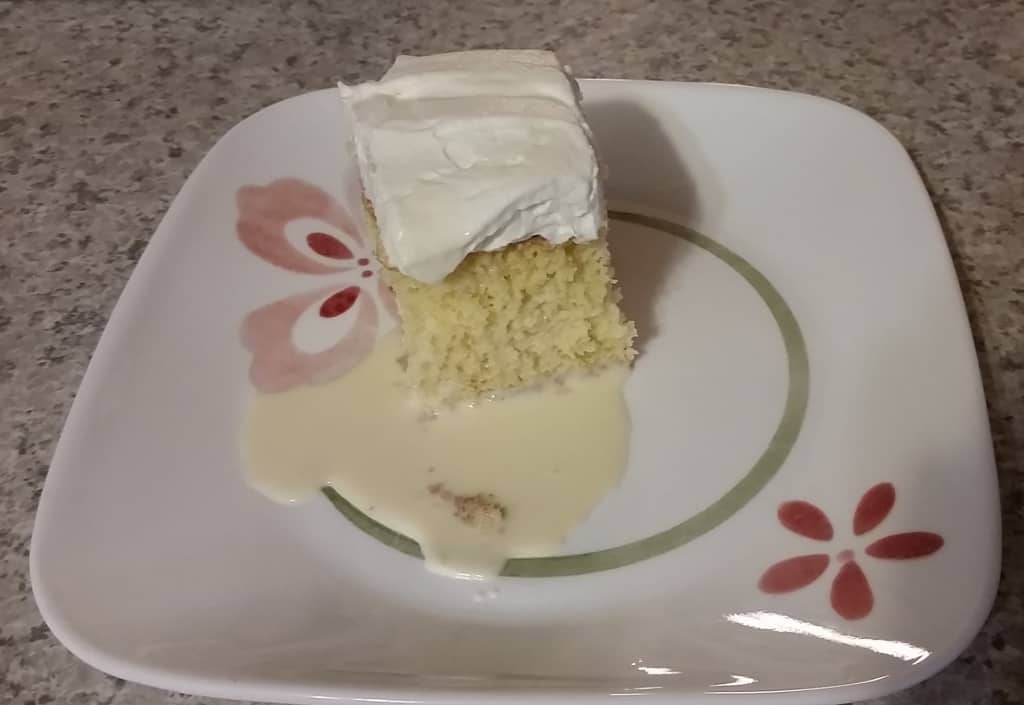
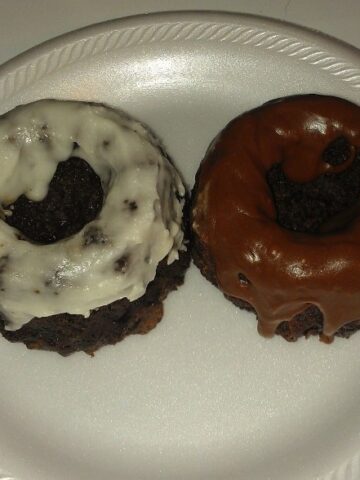
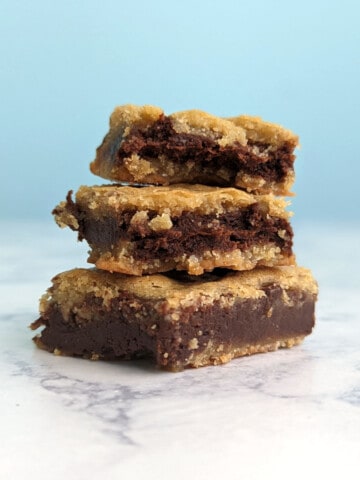
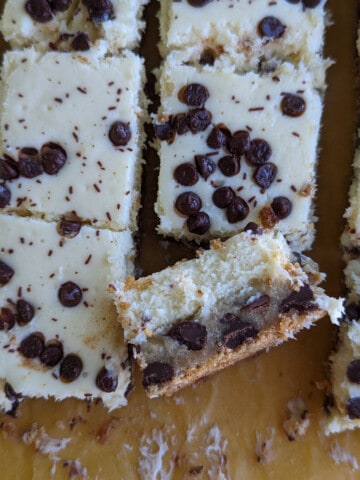

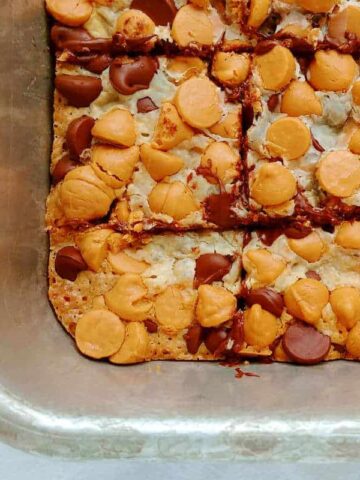
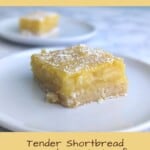

Jenn says
These are simply delicious. My husband said they are the best lemon bars he’s ever eaten!
Leona Konkel says
Thank you! I'm glad he enjoyed them!!